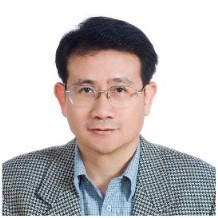Advanced Mini-LED/Micro-LED Displays and Materials
A special issue of Applied Sciences (ISSN 2076-3417). This special issue belongs to the section "Optics and Lasers".
Deadline for manuscript submissions: closed (30 November 2022) | Viewed by 3802
Special Issue Editors
Interests: intelligence biomedical photoelectric; photoelectric semiconductor materials and device; artificial intelligence, intelligence green energy; optical design, opto-mechatronics integrated design; patent layout and analysis
Special Issues, Collections and Topics in MDPI journals
Interests: Si-based photonics: nano-size waveguide, modulator, light sources; organic-inorganic composite solar cells; organic-inorganic composite light sources; quantum-dot/quantum well laser diodes
Special Issues, Collections and Topics in MDPI journals
Interests: PSS; GaN template; free standing GaN; MOCVD; HVPE; LED; PV
Special Issues, Collections and Topics in MDPI journals
Special Issue Information
Dear Colleagues,
Micro-LED is a high-tech display technology. As the name implies, micro-LED displays consist of arrays of microscopic LEDs forming the individual pixel elements. The applications include high-end display, head mount devices, visible light communications, commercial display, biomedical devices, and projectors, which benefit from the obvious advantages of micro-LED display in brightness, high resolution, and color saturation.
Advanced quantum dots (QDs) have many unique physical and optical properties, such as high photoluminescence quantum yield, tunable emission over the entire visible spectral region, narrow emission spectrum, and high color purity. QDs have become a suitable candidate material in the display field, which has great potential to replace the traditional phosphor powder and increase the display color gamut range.
In this Special Issue, we would like to invite all papers related to science and technologies of advanced quantum dot (QD) ranging from materials research, device structure and properties, device applications for micro-LED display, manufacturing, and high color gamut of display, especially in the following fields:
Advanced micro-LED display;
Mini-LED display;
Advanced quantum dot material;
Research of full spectrum;
Bio-applications;
Mechanical resonators;
Optoelectronics device, flexible lighting, micro-display, bio-applications etc.
Prof. Dr. Ye Zhi TingProf. Ching-Fuh Lin
Prof. Cheng-Huang Kuo
Prof. Shu-Ru Chung
Guest Editors
Manuscript Submission Information
Manuscripts should be submitted online at www.mdpi.com by registering and logging in to this website. Once you are registered, click here to go to the submission form. Manuscripts can be submitted until the deadline. All submissions that pass pre-check are peer-reviewed. Accepted papers will be published continuously in the journal (as soon as accepted) and will be listed together on the special issue website. Research articles, review articles as well as short communications are invited. For planned papers, a title and short abstract (about 100 words) can be sent to the Editorial Office for announcement on this website.
Submitted manuscripts should not have been published previously, nor be under consideration for publication elsewhere (except conference proceedings papers). All manuscripts are thoroughly refereed through a single-blind peer-review process. A guide for authors and other relevant information for submission of manuscripts is available on the Instructions for Authors page. Applied Sciences is an international peer-reviewed open access semimonthly journal published by MDPI.
Please visit the Instructions for Authors page before submitting a manuscript. The Article Processing Charge (APC) for publication in this open access journal is 2400 CHF (Swiss Francs). Submitted papers should be well formatted and use good English. Authors may use MDPI's English editing service prior to publication or during author revisions.
Keywords
- Advanced micro-LED display
- Mini-LED display
- Advanced quantum dot material
- Research of full spectrum
- Bio-applications
- Mechanical resonators
- Optoelectronics device, flexible lighting, micro-display, bio-applications etc.








